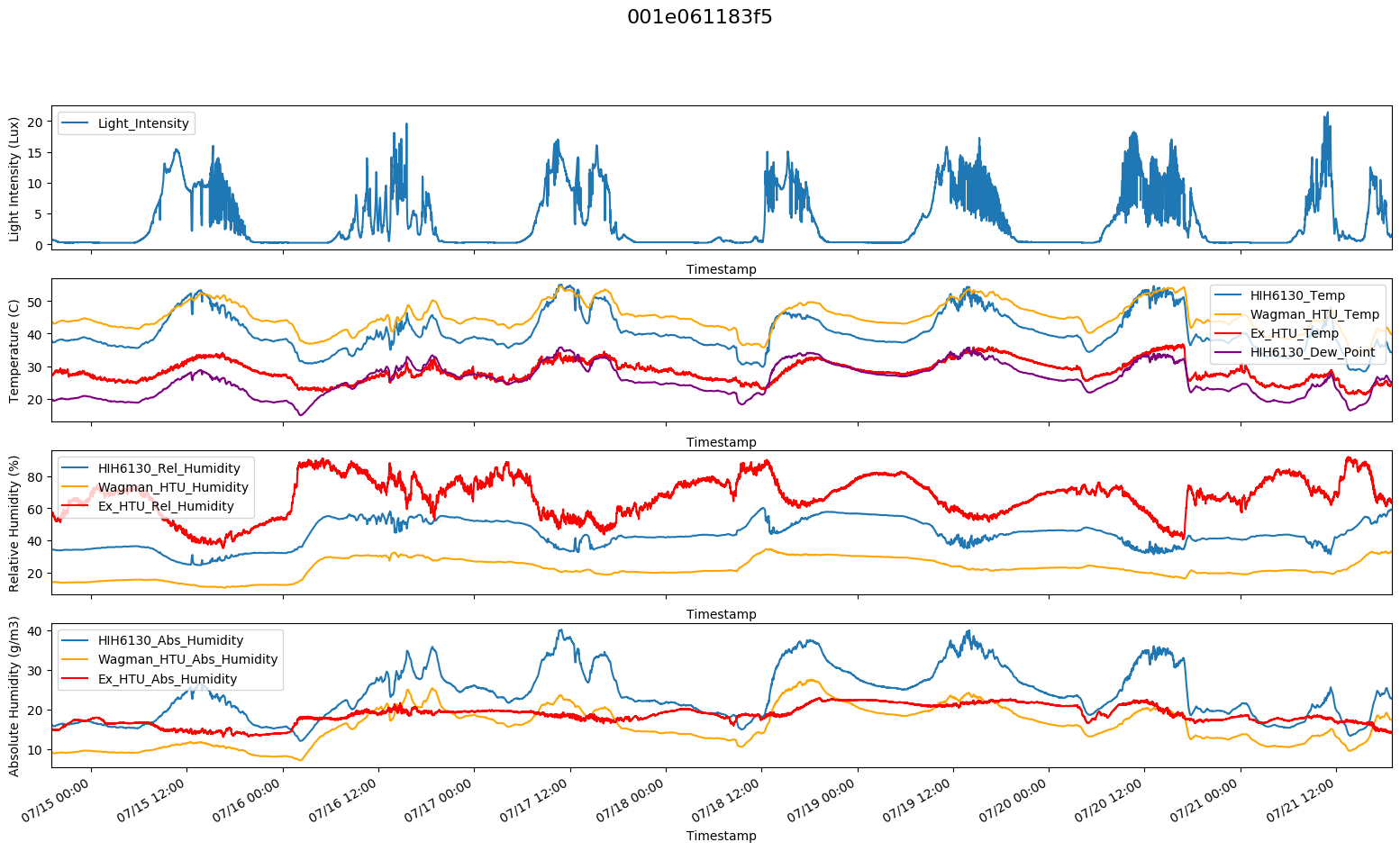Hello! My name is Richard Yeh, and I am a rising senior with majors in Electrical Engineering and Integrated Science Program at Northwestern. This summer, I am working with Pete Beckman and Rajesh Sankaran on improving the resiliency of the Array of Things (AoT) nodes. The AoT nodes that are deployed have to be outdoors throughout the year, experiencing the full force of nature through night and day and rain or sun. Despite this, the sensors have to be reliable and resilient to maximize uptime and minimize maintenance, especially as the scale of the project increases and more nodes get deployed over a larger range of area. When looking at nodes that have been brought back from deployment over the years, it has been observed that the electronics inside are prone to failure, which is expected given the harsh environment they are exposed to. My work here is to develop a method to predict and anticipate weather events that could negatively impact the performance of the nodes so that preventive action can be taken.
The first step was to ensure that accurate data is being collected to better understand the environment inside and surrounding the nodes. This involves identifying historically problematic sensors and fixing the pipeline through which their data is sent. Many of the sensors used by the AoT nodes run on a communication bus using the I2C protocol which is able to interface with dozens of sensors through just two wires. Previously, it was noted that many of the sensors running this protocol often report erroneous values, publishing inaccurate results that were being made public. Additionally, by nature of the way the I2C protocol works, when one sensor on the bus malfunctions, there is a chance for the entire bus to go down, rendering other sensors nonfunctional. My first project was to resolve this issue by updating the firmware on the sensor boards to be able to run a check on the I2C bus and react accordingly. The changes allow for a scan to be run on the bus to detect and identify these failing sensors and “disable” them, preventing data from being published from those specific sensors even when requested from.
Having updated the firmware on several deployed nodes, the next step was to determine the types of failures that can occur. For electronics in enclosures that are exposed to a variety of external climatic conditions, one major concern is humidity build up and condensation, which is problematic for the longevity of these electronics as the presence of water leads to significantly higher rates of corrosion.

Figure 1: Sensor Board from Previously Deployed Node. White discolorations indicate corrosion
In studies of simulated cycling temperature conditions to a typical electronic enclosure, accumulation of water content in the enclosure has been observed over each cycle, increasing the absolute humidity over time [1]. Additionally, the problem is compounded on by possible contamination on the sensor boards from the manufacturing process. Contamination in the form of ionic residues on the boards can lead to leakage current and corrosion at lower humidity levels as the salts begin to absorb moisture and form conduction paths [2].
To get an idea of when and why corrosion happens on the boards, it is important to see what the climate profile looks like inside the nodes. By using temperature and humidity measurements from sensors inside of the enclosure housing the electronics, the internal microclimate can be observed and analyzed:

Figure 2: Plot of Internal and External Temperature, Relative Humidity, and Absolute Humidity Over 7 Days for 1 Node
It is suspected that condensation may be happening where there are sudden drops in internal absolute humidity, indicating a loss of water content. However, continued analysis over a longer range of time and over a larger range of nodes is still being done to correctly identify the cause of the sensor readings, such as other factors like rain events.
Eventually, the goal is to extend this kind of real time analysis and detection to other potentially damaging cases, such as conditions that promote corrosion or extreme temperature. Once a node senses that the environment is reaching the threshold that would result in one of these damaging scenarios, the node can then employ emergency self-protecting procedures, such as generating heat using the CPU onboard in cold temperatures, or shutting down parts of the board that could be at risk because of condensation. All of this helps to keep these nodes alive for a longer period of time, collecting and publishing accurate data.
References
[1] H. Conseil, V. C. Gudla, M. S. Jellesen, R. Ambat, “Humidity Build-Up in a Typical Electronic Enclosure Exposed to Cycling Conditions and Effect on Corrosion Reliability”, Components Packaging and Manufacturing Technology IEEE Transactions on, vol. 6, no. 9, pp. 1379-1388, 2016.
[2] V. Verdingovas, M. S. Jellesen, and R. Ambat, “Impact of NaCl contamination and climatic conditions on the reliability of printed circuit board assemblies,” IEEE Trans. Device Mater. Rel., vol. 14, no. 1, pp. 42–51, Mar. 2014.